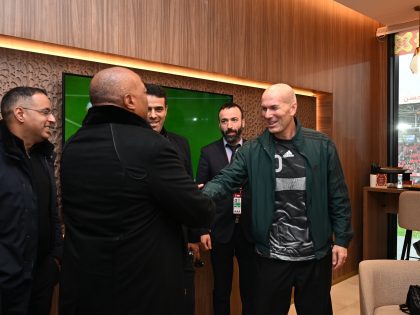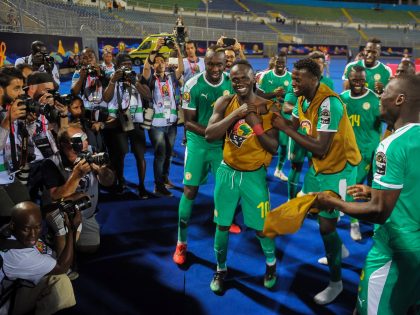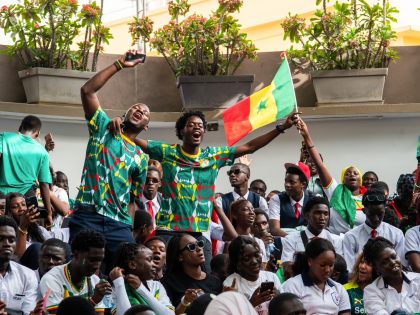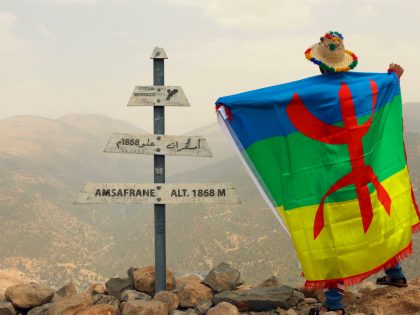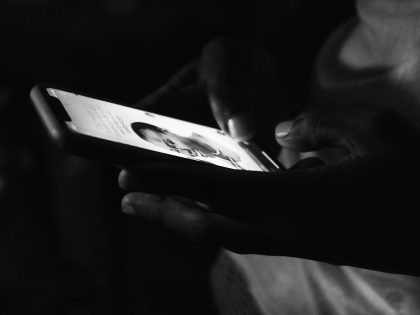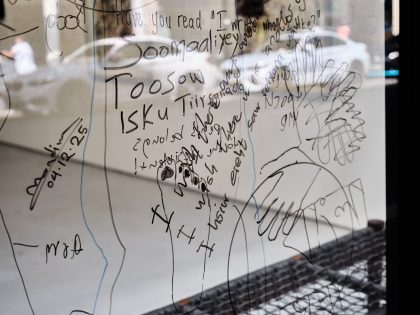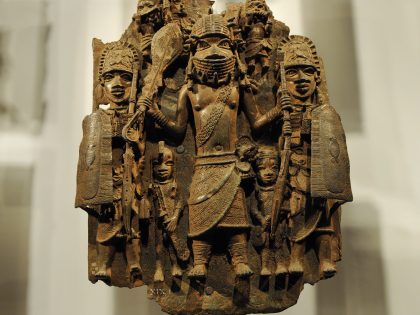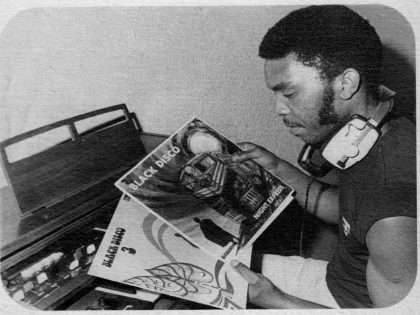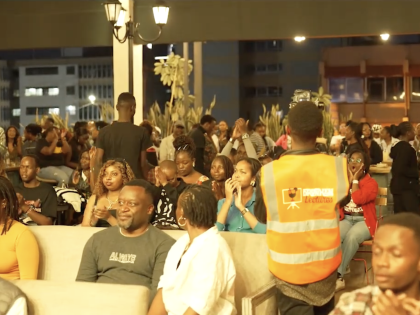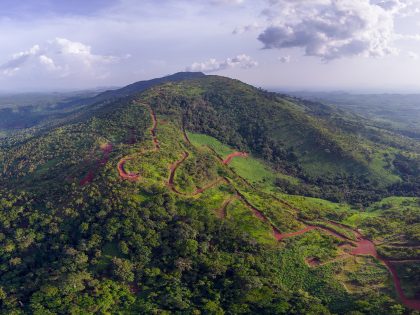Hassan Khan and his 6 minute film “Jewel”

Last year, while visiting Okwui Enwezor’s Triennale at the Palais de Tokyo in Paris (titled: “Intense Proximity”), I was struck by one specific piece: “Jewel”, a 6 minute short film by Egyptian artist Hassan Khan. As already noted by Orlando Reade writing about The Ungovernables, this short video is as much enigmatic as enthralling:
Even if abstract and symbolic, I believe it’s a piece of art that, on a deeper analysis, can shine light on the contemporary reality of post-revolution Cairo. Almost a year ago, I decided to interview Hassan Khan to discover more about the work.
The Triennale’s press release — these words are not Khan’s — described “Jewel” as follows:
The work shows a luminescent fish in the deep waters of the Black sea. The image progressively transforms itself into a speaker, filmed in the midst of a dark space. Suddenly, the complete image of the scene appears when two men are seen dancing around an audio speaker. […] From this (one might say banal) scene was born the idea to produce a parallel experience where culture could emerge free from its relation to the real world. In this way, the cultural artifact — from clothing, to music, to poetry — is put in a position where the public can interact with it on its own terms and drawing its own connections. But then again, what is the impact of a microevent on the grand scale of history?
Hassan, can you provide more detail and information about what’s behind “Jewel”? I’d like to know more about the fish in the beginning, about the lead speaker, about the street scene which inspired you. Where were you? Do you remember specifically what song was playing? What kind of speaker were these two men dancing to? I’m not trying to solve the enigmatic side of the work — which has to remain untouched in its beauty — I’m just trying to have more elements to read it properly, to clarify the process and the real scenario behind the piece.
Hassan: The Fish: the angler fish is a monster in the sense that it’s a creature, a living being that we are unable to anthropomorphize — it fascinates us and terrifies us at the same time. It is also a fish that comes from an ancient prehistoric moment. Its aesthetics are formed and wedded to its context, the deep sea, it is thus able to survive through these aesthetics that are also the same things that draw us and repel us at the same time. I wanted “Jewel” to begin with what seemed to be so distant to us (yet shares life with us) and then (through the process of fossilization into an icon on the speaker) to see that transforming into an emblem of our very own culture and civilization. The music that comes out of these speakers is what the characters are dancing to but is also what they are, in a sense, producing. It is their depth and surface and I wanted to connect that to a very distant memory that is both totally external but also the deepest internal point.
The Speaker: as mentioned the rotating speaker is stamped with the icon of the deep sea fish. It refers to the music being broadcast out of this speaker it is a music that is in its own way wedded to its context — its aesthetics are those of survival and thus it is a music that is significant, especially to those who are dancing to it. The speaker is the cultural/technological transmitter — it is how this music is made concrete and material and introduced into a social economy. That’s why the emblem has to be on the speaker not anywhere else.
The Street Scene: I glimpsed the scene literally out of the corner of my eye as I was going home as the taxi turned a corner. It was very fast. Also it’s not a very surprising scene; it’s a daily type of typical street scene in a city like Cairo. Maybe the fact that I glimpsed it so fast — that I wasn’t focused on it, made it come into sharp focus and allowed for a process of automated “day dreaming” where I imagined the whole piece with all its details immediateley in one go. I don’t remember which song it was, but it was a chaabi song — which is sort of the distant source for the piece of music I made for “Jewel”. I composed this music in a way trying to treat the popular genre (in this case chaabi) as a basic vocabulary but then to “write” an original piece of music in my own non-generic fashion. The speaker was probably home made. What was interesting though was the light bulb attached to its bottom (that was flashing) a little homemade twist. Maybe what I saw in this scene was how people produce things in their own non-generic fashion to touch the roots of civilization in an unconscious way. That’s why the flashing light is important as it dissociates all elements from their connection to the time and place they’re in — however they can only be the absolute products of that time and place.
***
A long email silence followed Hassan’s reply. Recently, picking up the conversation, Hassan explains why it was difficult to go on with the interview.
Hassan: I think that, unfortunately, this conversation came at exactly the moment where I became incredibly weary of “Jewel”; it was a piece that I had carried with me for four years before being able to produce it, and then after all of that I intentionally made myself forgot it. So I could build it from scratch which was the only way I could really do it the way I wanted it to, and then suddenly it was out in the world. The response has generally been quite overwhelming, and although that is something very valuable of course, at one moment I started personally shutting down towards the piece — starting to feel like I don’t really want to discuss it anymore. Finally, after it was last shown at Palazzo Grassi in Venice, I decided to stop showing it for at least the coming two years (except in Cairo where I am planning a sort of selective survey next year); so I think it was maybe not the best of luck for this conversation that it fell at this exact moment.
